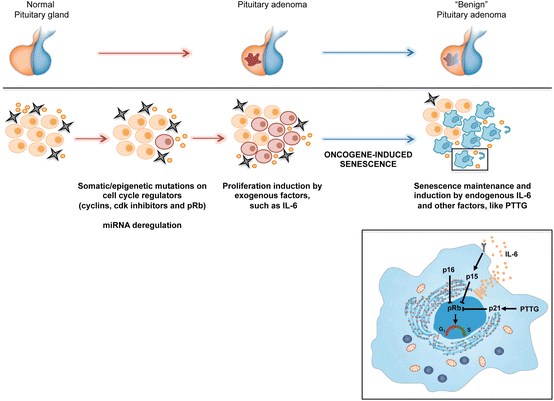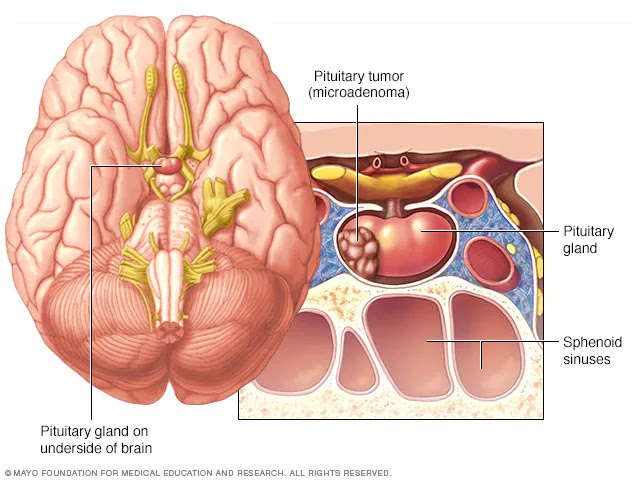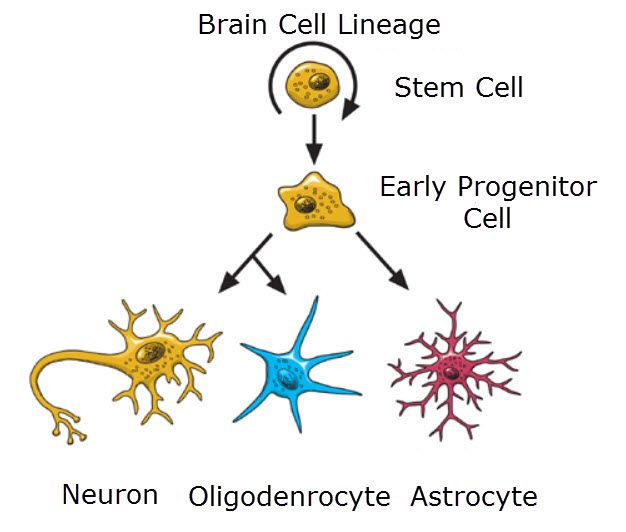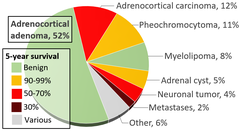Acromegaly is a syndrome that consequences whilst the anterior pituitary gland produces excess boom hormone (GH). Approximately 90-95% of acromegaly instances are as a result of a pituitary adenoma and it maximum typically affects middle elderly adults, Acromegly can bring about extreme disfigurement, critical complicating situations, and premature dying if unchecked. The disorder which is regularly additionally associated with gigantism, is hard to diagnose within the early tiers and is often ignored for decades, till adjustments in outside features, particularly of the face, emerge as noticeable with the median time from the development of initial symptoms to analysis being 12 years.
Cushing's syndrome is a hormonal disorder that causes hypercortisolism, that is elevated tiers of cortisol within the blood. Cushing's sickness (CD) is the maximum common motive of Cushing's syndrome, liable for about 70% of instances. CD outcomes when a pituitary adenoma causes excessive secretion of adrenocorticotropic hormone (ACTH) that stimulates the adrenal glands to produce excessive quantities of cortisol.
Cushing's sickness might also cause fatigue, weight benefit, fatty deposits across the stomach and lower back (truncal weight problems) and face ("moon face"), stretch marks (striae) at the pores and skin of the stomach, thighs, breasts, and arms, high blood pressure, glucose intolerance, and various infections. In girls, it could purpose immoderate increase of facial hair (hirsutism) and in men erectile dysfunction. Psychiatric manifestations may include melancholy, anxiety, smooth irritability, and emotional instability. It may additionally bring about diverse cognitive difficulties.
Hyperpituitarism is a sickness of the anterior lobe of the pituitary gland which is generally because of a practical pituitary adenoma and consequences in hypersecretion of adenohypophyseal hormones which includes growth hormone; prolactin; thyrotropin; luteinizing hormone; follicle-stimulating hormone; and adrenocorticotropic hormone.
Pituitary apoplexy is a condition that takes place while pituitary adenomas all at once hemorrhage internally, inflicting a rapid growth in length or whilst the tumor outgrows its blood supply which causes tissue necrosis and subsequent swelling of the lifeless tissue. Pituitary apoplexy regularly gives with visual loss and surprising onset headache and calls for timely remedy frequently with corticosteroids and if necessary surgical intervention.
Central diabetes insipidus is resulting from dwindled manufacturing of the antidiuretic hormone vasopressin that reasons intense thirst and immoderate manufacturing of very dilute urine (polyuria) that could result in dehydration. Vasopressin is produced inside the hypothalamus and is then transported down the pituitary stalk and saved within the posterior lobe of the pituitary gland which then secretes it into the bloodstream.
As the pituitary gland is in close proximity to the mind, invasive adenomas may also invade the dura mater, cranial bone, or sphenoid bone.





































